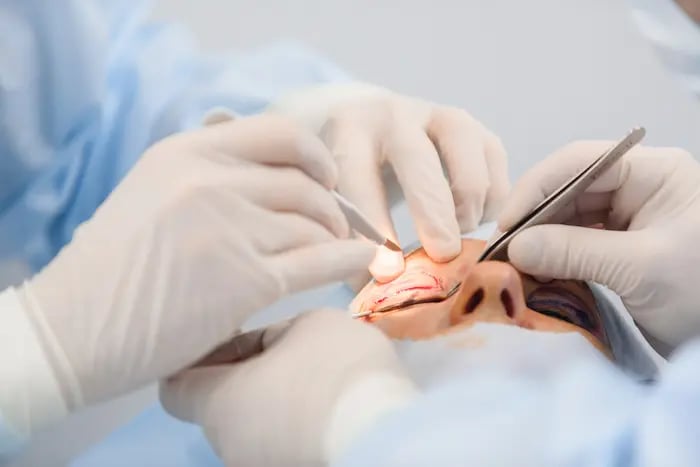Keratoconus

.webp?width=700&height=467&name=close-up-of-the-face-of-patient-who-is-undergoing-blepharoplasty-the-surgeon-cuts-the-eyelid-and-performs-manipulations-using-medical-instruments-min%20(1).webp)
Keratoconus
Keratoconus is a progressive disease which consists of the thinning and weakening of the cornea. Cornea acquires a conic aspect which alters sight and sharpness.
A visual test called corneal topography allows the diagnosis of keratoconus, and provides the necessary information for the treatment. The presence of such disease may also be suspected when a young patient with astigmatism and myopia, who has been prescribed glasses, must change their graduation regularly.
Causes:
- Genetic or hereditary predisposition.
- Chronic eye scratching and irritation.
- Small persisting traumas in the eye, which may damage corneal structure.
- Excessive exposure to UV rays from sunlight.
- It may also be associated with Down syndrome and Ehlers-Danlos syndrome.
Procedure: Until not so long ago, total corneal grafting was the only alternative for the keratoconus cases which did not show improvement with the use of glasses or contact lenses. Now, there are other possibilities, such as the lamellar corneal transplantation by means of the DSAEK equipment, which avoids complete corneal replacement, and the use of stitches. Another option is the implantation of intracorneal rings (Intacs or Ferrara), which produce corneal flattening, and increase the rigidity of corneal structure. Cross-linking is another option which, through UV light associated to riboflavin, induces the strengthening of corneal fibers. Such procedure manages to stop the corneal trend to bulge, and decreases its degree of curving, and consequently improves visual sharpness.

 Pay your appointment
Pay your appointment

